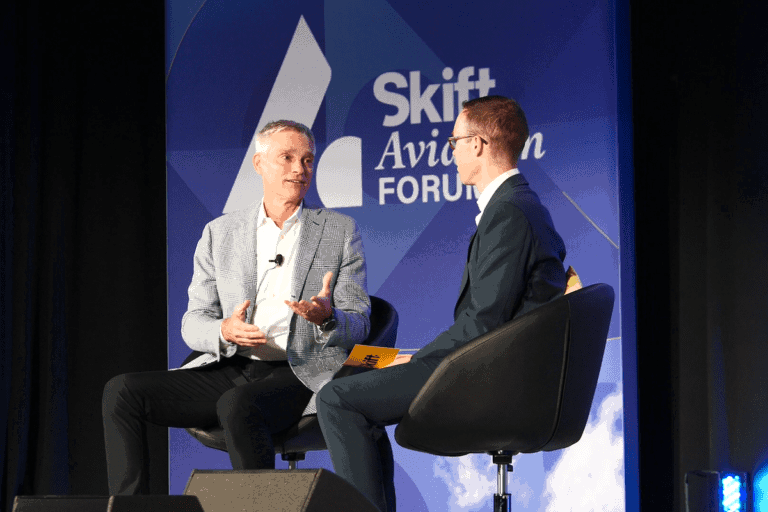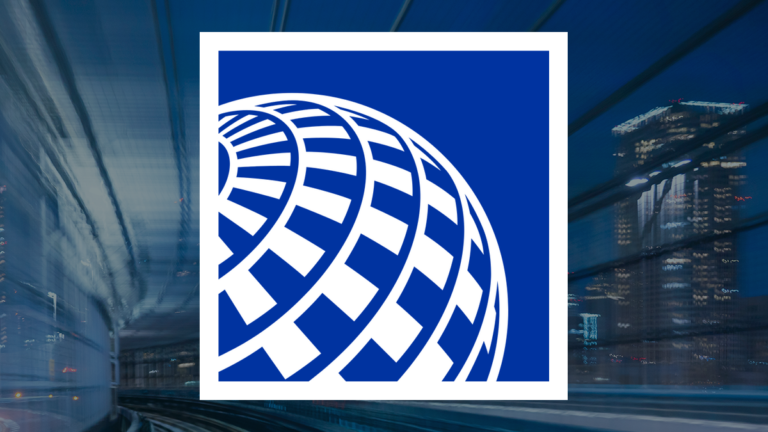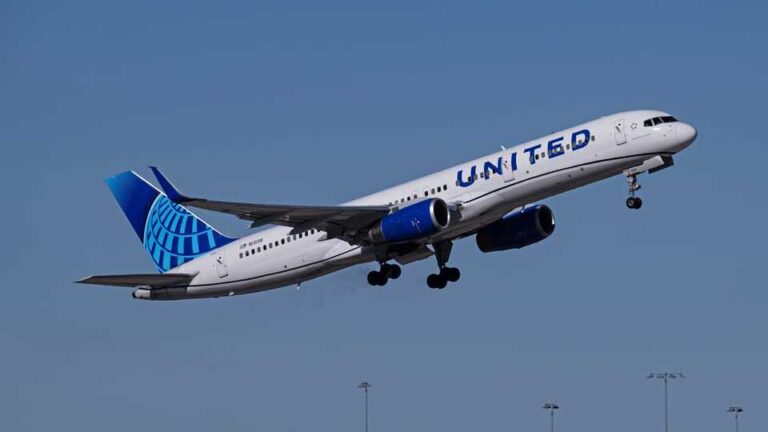American Airlines Is Profitable and Reliable But CEO Robert Isom Is Expected to Deliver More
Ten months into his tenure as CEO of American Airlines, Robert Isom has produced what he has repeatedly said he wants: An airline that is profitable and reliable.
American Airlines is currently in a state of urgency as it attempts to reverse course on a series of unpopular distribution changes implemented last year. These changes, introduced under the leadership of former Chief Commercial Officer Vasu Raja, have been projected to potentially result in over $1 billion in lost revenue in 2024. The sweeping overhaul of the airline’s distribution scheme has led to significant turmoil within the company and has prompted a reevaluation of its strategies.
The Distribution Changes
Under Vasu Raja’s tenure, American Airlines embarked on an ambitious plan to revamp its distribution model. The changes were aimed at modernizing how the airline sold tickets and interacted with customers, moving away from traditional channels such as travel agencies and online travel agencies (OTAs). Instead, the airline sought to drive more direct sales through its own digital platforms. This strategy was intended to increase profitability by reducing commissions paid to third-party distributors, enhance customer experience through personalized services, and gain better control over customer data.
The Rationale
The rationale behind this shift was multifaceted. By focusing on direct sales channels, American Airlines aimed to:
- Increase Revenue: Eliminating or reducing third-party commissions would ostensibly lead to higher revenue retention from ticket sales.
-
Enhance Customer Experience: Direct interaction with customers would allow the airline to offer more tailored services and build stronger customer relationships.
-
Leverage Customer Data: By owning the customer relationship, American Airlines could gather and analyze data more effectively, leading to improved marketing strategies and customer service.
Implementation Challenges
Despite these intentions, the implementation of these changes encountered significant obstacles. The airline industry, known for its entrenched practices, was resistant to such a radical shift. Travel agencies and OTAs, which play a critical role in ticket distribution, were particularly opposed to the new model. These entities argued that the changes would negatively impact their business, leading to pushback and strained relationships with American Airlines.
Financial Impact
The financial impact of the distribution changes has been substantial. The projected $1 billion loss in revenue for 2024 highlights the severity of the situation. This loss can be attributed to several factors, including:
- Decreased Sales: Resistance from traditional distribution channels led to a reduction in ticket sales through these outlets.
-
Increased Costs: The need to invest heavily in technology and marketing to promote direct sales channels incurred significant costs.
-
Operational Disruptions: Integrating new systems and processes, as well as training staff, led to operational inefficiencies and increased expenses.
Customer Backlash
Customers, too, have expressed dissatisfaction with the changes. The transition to direct sales channels was not as seamless as anticipated, leading to confusion and frustration. Customers who were accustomed to purchasing tickets through travel agencies and OTAs found the new system cumbersome and less convenient. This backlash further exacerbated the revenue losses and strained the airline’s reputation.
Competitors’ Strategies
While American Airlines was grappling with the fallout from its distribution changes, competitors were closely watching the developments. Some airlines opted for a more cautious approach, making incremental changes to their distribution models rather than overhauling them entirely. This prudent strategy allowed them to avoid the pitfalls that American Airlines encountered and maintain smoother operations.
Leadership Changes
The challenges faced by American Airlines eventually led to changes in leadership. Vasu Raja’s departure marked a turning point as the airline sought to realign its strategies and mitigate the impact of the distribution changes. The new leadership team, led by CEO Robert Isom, is now tasked with reversing the course and stabilizing the airline’s financial and operational performance.
Reversing Course
Reversing the unpopular distribution changes is no small feat. It involves not only restoring relationships with travel agencies and OTAs but also rebuilding customer trust. The key steps in this reversal process include:
- Reengaging Distribution Partners: American Airlines needs to mend fences with travel agencies and OTAs, finding a balanced approach that benefits all parties involved.
-
Enhancing Customer Experience: Improving the direct sales channels to ensure they are user-friendly and meet customer expectations is crucial. This may involve investing in better technology and providing comprehensive customer support.
-
Marketing and Communication: Clear and transparent communication with customers about the changes and the benefits of the revised approach is essential to regaining their trust and loyalty.
Long-Term Implications
The fallout from American Airlines’ distribution changes offers valuable lessons for the entire airline industry. It underscores the importance of:
- Stakeholder Management: Engaging and managing relationships with all stakeholders, including distribution partners and customers, is crucial for the success of any major strategic shift.
-
Change Management: Implementing significant changes requires careful planning, robust change management practices, and the flexibility to adapt based on feedback and evolving circumstances.
-
Customer-Centric Approaches: Keeping the customer at the forefront of any strategic decision is vital. Ensuring that changes enhance rather than disrupt the customer experience is key to maintaining loyalty and revenue.
The Road Ahead
For American Airlines, the road ahead is challenging but not insurmountable. The airline is in the process of recalibrating its strategies to mitigate the
In the fourth quarter, the Fort Worth, Texas-based carrier reported net income of $803 million, as well as the industry’s highest completion factor during the December holidays. The latter being no small achievement as troublesome winter weather led to higher cancellation rates at all seven of its principal competitors.
here, we are focused on business and really making sure that we have the capacity to address the opportunities in the marketplace,” Isom said. He noted that American will celebrate its centennial in 2026, and said: “I want American to be the airlines that meet the needs of our customers, our communities and our shareholders as well. And so we’re focused on that right now.”
Since the pandemic, American executives have repeatedly emphasized that it will grow where it is most profitable, in other words on domestic and near international routes like ones to the Caribbean and Central America. Gone were the elevated proclamations of being the world’s largest airline that executives made after its merger with US Airways in 2013.
Vasu Raja, American’s chief commercial officer, in September described the American of today as offering travelers “largest global network in the world,” and touted its many partnerships around the globe. That same statement, made several years earlier, almost certainly would have included one additional word: airline. Executives of post-merger American frequently billed it as the “largest global network airline in the world.”
Asked last week whether he has a vision for a future that goes beyond profitability and reliability, Isom said: “What you’re going to see from us, certainly in the near term, is more of the same, intense focus on reliability and profitability and accountability. We’re going to operate with excellence, and it’s going to require even greater planning and day-to-day execution. I want to keep the team and their head in the game every day.”
Dennis Tajer, spokesman for Allied Pilots Association (APA) that represents American’s 15,000 pilots, said he was pleased that Isom is focused on “accountability” as well as profits and reliability.
“That’s an affirmation that he might be getting deeper into the responsibility of being a CEO, into the transformation to leadership that this airline must have.” Tajer said. “This is what happens on the flight deck: if you’re the captain, accountability is the core principle in every decision.
“Robert Isom’s opportunity to establish himself as CEO wasn’t the day he took office,” Tajer said. “It is right now, today: he has announced he is accountable for what happens and now we will see where his leadership takes this airline.”





